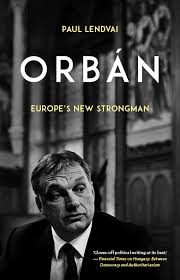In Budapest 1, a parliamentary district at the heart of the Hungarian capital, most voters will not support the party of Viktor Orban, the country’s far-right prime minister, in a general election on April 8. Yet as things stand, Mr. Orban’s party, Fidesz, will hold on to the seat — and its huge majority in Parliament. That speaks as much to the relative strength of Mr. Orban’s base as it does to his gerrymandering and his allies’ takeover of most private news outlets, the New York Times reports:
But it’s also because Hungary’s gaggle of small left-liberal opposition parties, who collectively form a majority in seats like this one, refuse to join forces behind a unity candidate. …But though the opposition’s disunity is a major reason for their recent failures, their main obstacles remain the ones created by Mr. Orban himself. Most contentiously, Fidesz rewrote the map of political districts in 2011.
 An analysis by the Political Capital Institute, a think tank [supported by the National Endowment for Democracy], suggested that left-leaning constituencies now contain an average of 5,000 more voters than right-leaning ones — making it harder for left-wing parties to win, the Times adds.
An analysis by the Political Capital Institute, a think tank [supported by the National Endowment for Democracy], suggested that left-leaning constituencies now contain an average of 5,000 more voters than right-leaning ones — making it harder for left-wing parties to win, the Times adds.
Paul Lendvai’s “fair-minded” new book “is a reminder that the lobbyists’ claims about Orban’s democratic credentials and his goodwill toward the United States are fake news,” notes Charles Gati, a senior research professor of European and Eurasian Studies at the Johns Hopkins School of Advanced International Studies and the author of “Failed Illusions: Moscow, Washington, Budapest and the 1956 Hungarian Revolt.”
“[F]or political and psychological reasons — he seems eager to create the legal foundation for a new constitution that would effectively turn today’s semi-authoritarian order into a fully authoritarian one,” he writes for the Washington Post:
If he is reelected in April with the super-majority he craves, he could further curtail the judiciary’s independence, further modify electoral law to stifle his remaining opponents’ chances at the polls and further curb freedom of the press. It seems that Orban’s model is Miklos Horthy’s antediluvian regime in interwar Hungary, a soft dictatorship that defied the country’s real and imagined foreign enemies and initially appealed to Hungarian pride. But it left humiliation and destruction in its wake at the end of World War II. If history were to repeat itself, Hungary’s slide from Central Europe to the Balkans would only accelerate.
 In east-central Europe, the notion of “illiberal democracy” — a regime in which one party claiming a monopoly on national identity and tradition maintains itself permanently in power — has become part of the political landscape, notes George Weigel, a board member of the National Endowment for Democracy. There, too, one finds open talk of the “Salazar model” — a relatively benign authoritarianism that uses state power to manage politics, the economy, and the culture in order to insulate the people from the riptides of post-modernity, he writes for National Affairs.
In east-central Europe, the notion of “illiberal democracy” — a regime in which one party claiming a monopoly on national identity and tradition maintains itself permanently in power — has become part of the political landscape, notes George Weigel, a board member of the National Endowment for Democracy. There, too, one finds open talk of the “Salazar model” — a relatively benign authoritarianism that uses state power to manage politics, the economy, and the culture in order to insulate the people from the riptides of post-modernity, he writes for National Affairs.







